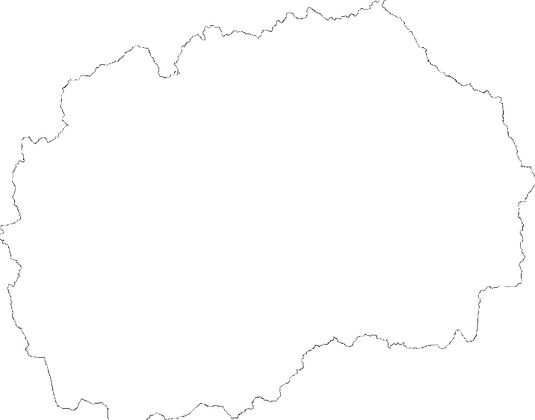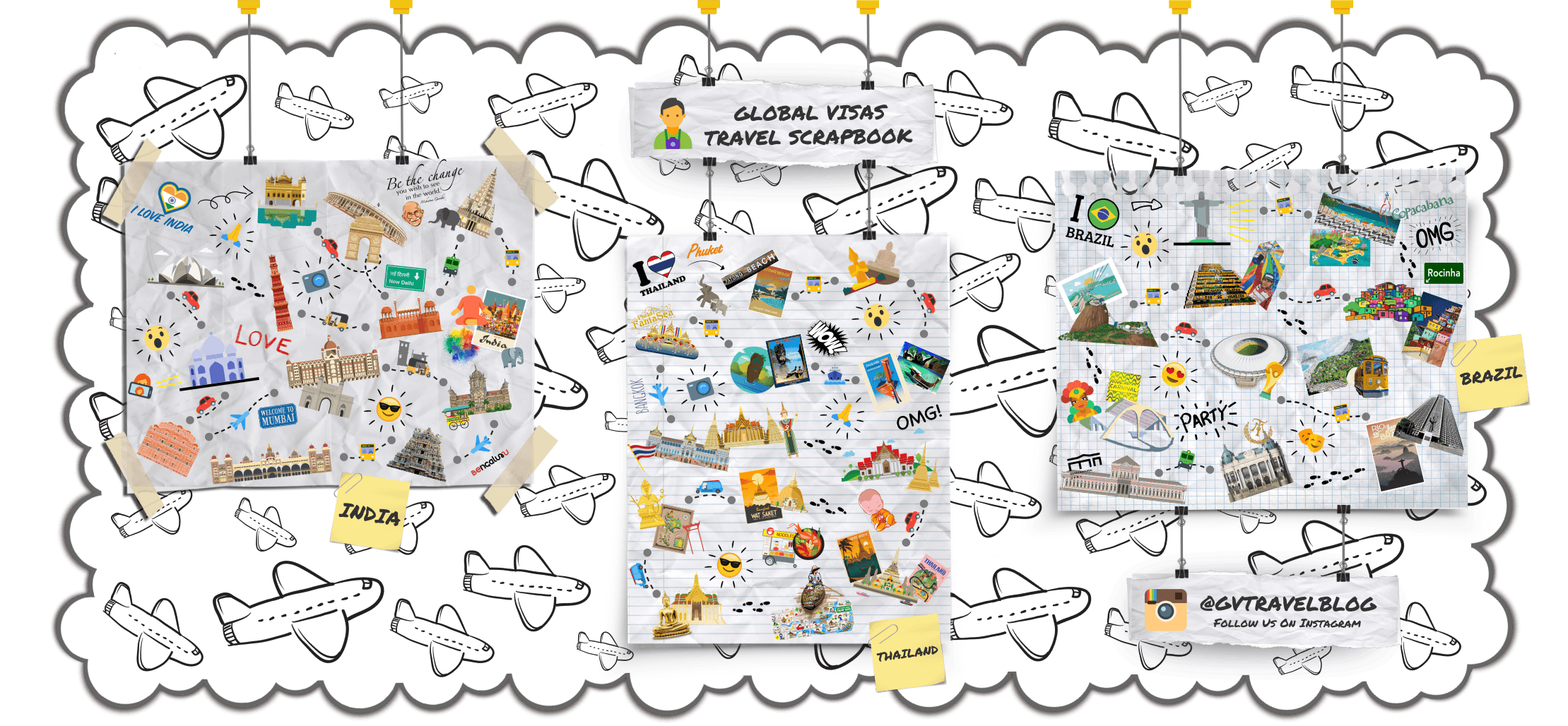BY CAR:
In this mountainous developing country, the roads are often narrow and not very well maintained, with warning signs for the quite frequent sharp turns rarely provided, and the safety barriers between your tires and high cliffs often rusty, or sometimes completely absent. In the north, there is a short network of motorways with separated directions and a posted speed limit of 120 km/h, linking Skopje with Tetovo and Gostivar in the west, and with the Alexander the Great Airport and Kumanovo in the east, but the surface quality is hardly better than the rest of the roads. The toll collection on the motorways depends on a system of toll stations (PEAGE) every 20 km or so (typically after leaving and on approaching major towns, which means you will pay twice for the route, say, between Skopje and Tetovo, two neighbouring cities), where all through traffic comes to a complete halt (as opposed to only those leaving and entering the motorway) and pay according to the type of the vehicle (for motorcycles and cars, which is often 20 or 30 denari).
Always make sure your tires are good enough. Especially in spring and autumn, weather in the mountains (Ohrid, Bitola) can differ significantly from the weather in the area you’re coming from.
All directional signs in the country show the town names in Macedonian Cyrillic and their Roman transliterations, sometimes accompanied by a second local language, which is often Albanian.
Renting a car is cheap. With Upgo Car Rent (+389 78 662 299, English spoken), you can get a good car for €20 a day (Oct 2017). He will bring the car to, and get it back from your hotel.
BY TRAIN:
National trains are slow, but they are nonetheless a nice alternative to hot, crowded buses in the summer. The main train line runs from Skopje to Bitola and Skopje to Gevgelia. No trains run to Ohrid.
BY BUS:
Perhaps the most common way of travelling in the country, the buses are frequent and quite reliable, if sometimes a bit slow and old (though not exactly dilapidated). The tickets are typically printed in Macedonian, with English translations or even Roman transliterations rarely provided. Here is a quick guide to reading your Macedonian ticket: The destination will be printed on the top (best to refer to the Wikivoyage article of the town in question for the Macedonian name of it), Дата (Data) translates, non-surprisingly, date, and Час (Čas) is the time of the departure. Перон (Peron) indicates the number of the platform your bus will be departing from, which is usually well-signed in the stations, and Седиште (Sedište) is your seat number, although on less travelled routes, this will typically be assigned to the seats 3 and 4, which means you are allowed to sit whatever place you like. It’s possible to hail buses directly on the streets, in which case you will pay to the driver on board, but if there are no free seats available, this means you are making the whole journey standing—which is unlikely to be the best travel experience. The bus companies often prefer to inscribe their names in the Roman alphabet in the livery, but the tickets will indicate them in the Cyrillic. Common national companies include Rule Turs (Руле Турс), Galeb (Галеб), and Classic Company (Класик Компани). The destination signs in front of the buses are provided in Macedonian, and in the other common local language of the destination if there is one, this in most cases being Albanian.
BY TAXI:
Taxis are perhaps the most common mode of transport in North Macedonia among tourists. Most will usually charge a flat rate of 30 denari (in Skopje 50 denari) with the extra kilometres added on. Be careful when negotiating the price of the fare beforehand. Within city limits, prices over 100 denari are considered expensive even though the amount only converts to a few American dollars. Macedonian cities are small, and would only take approximately 10–15 minutes to travel from one side of the city to the other by car. In Skopje, the capital and largest city, this should work out to an amount of about 100-150 denari.
A general exception to this rule is during peak tourist seasons particularly in the town of Ohrid. The summer months are the most profitable for many small businesses in Ohrid (and for some businesses, the only profitable months) including taxi drivers. For this reason many drivers will charge up to three times the flat rate for the same distance. Most taxis will insist on driving for no less than 100 denari which can be heard as “sto denari” or a “stotka” (slang term for a 100 denari bill). Generally this is excessive but you can either negotiate the price down to 80 or even 70 denari to be reasonable, or else simple bargain hunting is all that is required. During the peak seasons it is possible to find drivers willing to go as low as 40. Never feel pressured to take a taxi that seems overpriced.
BY BOAT:
There are plenty of boats for charter around Lake Ohrid and will show you the whole lake for a cheap price.
BY BICYCLE:
Despite often challenging (but also scenic) terrain, North Macedonia is, generally, a pleasant destination for bicycle travel. An idea of North Macedonia’s geography can be given by the local toponymy: in most countries, mountains and hills are named, while areas of flat land often lack specific names; in North Macedonia, flat land is precious, and every area of it has an individual name, such as Bitolsko Pole (“the Field of Bitola”), and Prilepsko Pole (“the Field of Prilep”). Many bookstores are decorated with a country’s 3-dimensional map, which is quite impressive.
There are many paved country roads that are in good condition, but see little traffic. Main roads betwen major cities may be busy, with narrow lanes and no shoulders; however, in many cases the busy new road (avtopat) is parallelled by the old road which now sees very little traffic, but is still maintained to some extent. This is the case, for example, for roads between Skopje and Veles, between Prilep and Bitola, or between Bitola and Resen. Some of these older roads are paved with stone, rather than with asphalt. As more expressways are built (e.g. the one from Kičevo to Ohrid is under construction as of 2017, one may hope that more of today’s busy main roads will be relegated to the status of older low-traffic roads.
North Macedonia’s air quality is pretty good, and even busy roads have much less dust and exhaust than roads in e.g. China. Unlike China, in North Macedonia one very rarely sees pedestrians or moped riders wearing face masks.
Lots of people ride bicycles in cities (for transportation and recreation), and one can see recreational bicyclists in the countryside as well. Strangely, you can see stores selling new bicycles (along with other products) much more often than stores selling spare parts. Still, major cities, such as Skopje and Bitola, have specialized shops for bicycle parts and repairs; in smaller towns, one may look for a vendor of spare parts, or a bike repair man, in a local bazaar. Gas stations may or may not have air pumps.
In the past, it was possible to take a bicycle on a train. As of 2017, train stations display an order (dated 2016) which prohibits taking bulky items, “including bicycles” on trains. However, in practice bicycles are often still allowed on older trains, even if they may be fully prohibited on new ones.
A national 1:300,000 map, as well as maps of some national parks and some regional and city maps, are published by Trimaks, and sold in Trimaks stores and by other book vendors in major cities.
A word of caution: very occasionally, a road shown on a map may not exist, or may not allow bicycles. For example, looking at a map, one may be tempted to take a scenic route from Skopje to Ohrid, along the Kozjak Reservoir (Ezero Kozjak) and the valley of the Treska River, via Makedonski Brod and Kičevo. Some maps show such a road running along the east coast of the reservoir; unfortunately, although it exists (as of 2017, it’s a single-lane road, and cars are allowed to travel on it in different directions during different hours), bicycles are not allowed to proceed beyond the gates of the Jasin Nature Reserve. Other maps show such a road running along the reservoir’s west side; alas, in reality (as of 2017) it does not exist at all, and to fill the missing piece (a section from the Kozjak Dam to Zdunje) would require remarkable feats of engineering.









